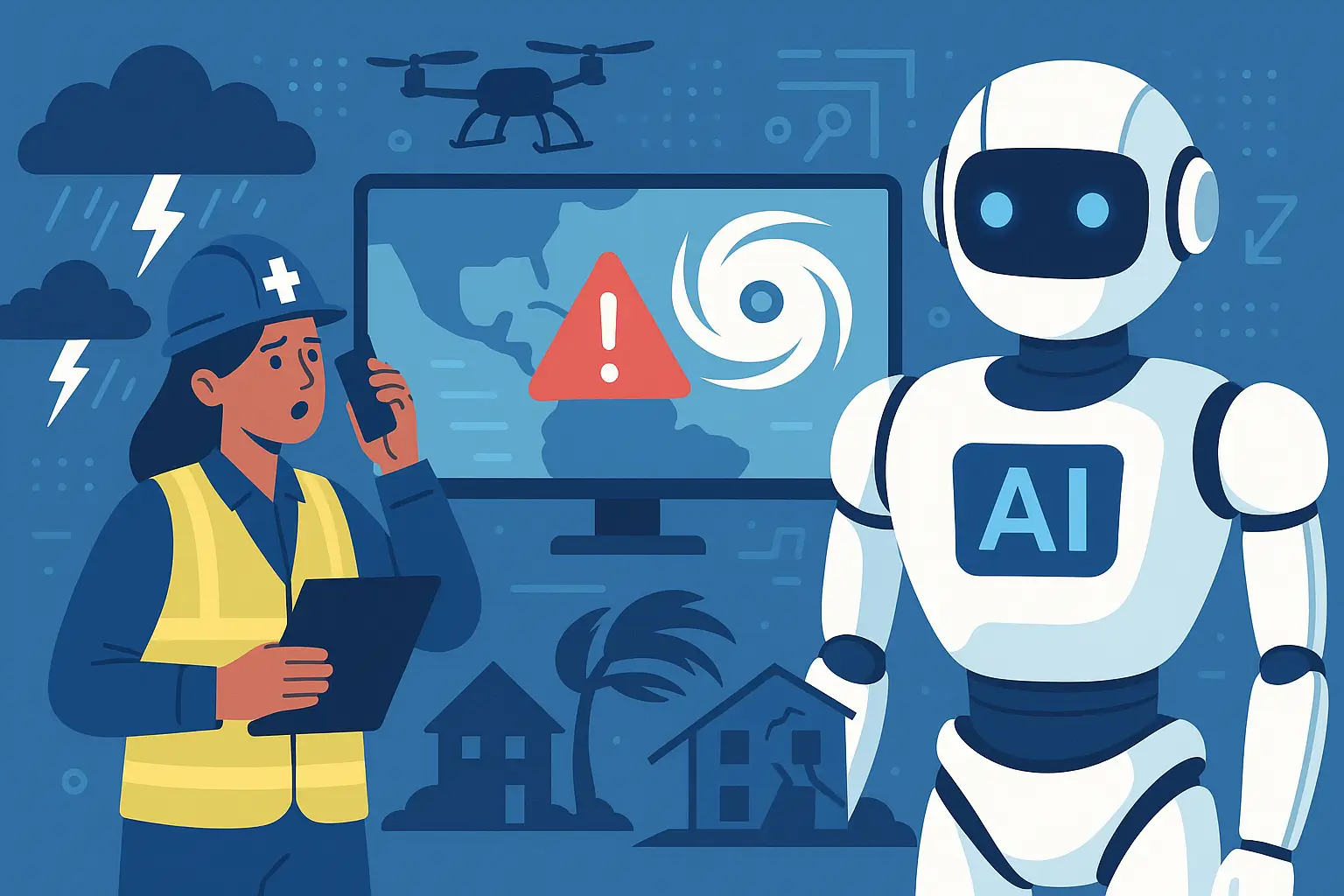Artificial Intelligence (AI) is proving to be a game-changer not just in business and entertainment, but also in high-stakes, life-saving fields like disaster response and emergency management. As climate change leads to more frequent and severe natural disasters, and global crises become increasingly complex, AI offers innovative solutions for preparation, response, and recovery. This article explores how AI technologies are helping to protect lives and reduce damage when emergencies strike.
Understanding the Role of AI in Disaster Response
Disasters—whether natural, biological, or man-made—require rapid, data-driven decisions under intense pressure. AI excels at analyzing massive volumes of information quickly and accurately, making it ideal for high-stress environments. From predicting hurricanes to coordinating evacuations and aiding rescue missions, AI enhances the entire disaster lifecycle.
AI in Disaster Prediction and Early Warning Systems
1. Earthquakes and Tsunamis
Seismologists are now using AI to:
- Analyze seismic data for early warning signs
- Improve the speed and accuracy of earthquake detection
- Identify potential tsunami risks in coastal regions
These insights allow governments to issue alerts and prepare communities faster than ever before.
2. Hurricanes and Storms
AI models ingest satellite imagery, weather data, and historical patterns to forecast:
- Hurricane paths and intensity
- Areas most likely to experience flooding
- Potential wind and storm surge damage
For example, IBM’s The Weather Company uses AI to deliver real-time storm updates and risk assessments.
3. Wildfires
AI can:
- Predict wildfire ignition zones using weather and vegetation data
- Track fire spread with drone imagery and thermal sensors
- Recommend optimal evacuation routes and containment strategies
Tools like FireCast and Prometheus integrate these capabilities into public safety systems.
4. Pandemics and Health Emergencies
During the COVID-19 pandemic, AI was used to:
- Track virus spread and contact tracing
- Predict case surges and hospital needs
- Speed up vaccine research and distribution logistics
AI-powered chatbots also handled millions of health-related queries, easing pressure on call centers.
AI in Real-Time Emergency Response
When disaster strikes, every second counts. AI helps responders by:
1. Real-Time Mapping and Situational Awareness
AI processes satellite images and drone footage to:
- Detect blocked roads, damaged infrastructure, and isolated survivors
- Generate real-time maps for rescue teams
- Assess the scale of damage to prioritize resources
Platforms like Planet Labs and UNOSAT provide dynamic disaster maps for humanitarian missions.
2. Search and Rescue Operations
AI-powered drones and robots assist in:
- Locating survivors in rubble or flooded areas
- Navigating dangerous or inaccessible zones
- Providing two-way communication or delivering medical supplies
This technology improves response speed while reducing risks to human responders.
3. Resource Allocation
AI optimizes logistics by:
- Matching supplies with urgent needs
- Managing inventory and transportation routes
- Predicting shortages or surpluses
This ensures that aid reaches the right people at the right time.
AI in Post-Disaster Recovery
The work doesn’t end when the storm passes. AI continues to support long-term recovery efforts:
1. Damage Assessment
AI analyzes images and sensor data to:
- Quantify damage to infrastructure and property
- Estimate insurance claims
- Guide rebuilding priorities
This speeds up financial assistance and reconstruction planning.
2. Mental Health Support
AI chatbots and virtual therapists offer immediate psychological support to affected individuals, especially where traditional services are unavailable.
3. Learning and Improvement
AI systems store and analyze data from past disasters to:
- Identify patterns and improve future response plans
- Train emergency personnel with realistic simulations
- Evaluate the effectiveness of relief efforts
Key Technologies Driving AI in Disaster Management
- Machine Learning: Finds patterns in historical and real-time data to improve forecasts.
- Natural Language Processing (NLP): Processes reports, social media, and emergency calls to detect crisis signals.
- Computer Vision: Interprets images from drones and satellites for rapid assessment.
- Robotics: Supports search and rescue in hazardous environments.
- IoT Sensors: Monitor environmental conditions like water levels, air quality, and structural integrity.
Benefits of AI in Disaster Response
1. Speed and Efficiency
AI makes critical decisions faster than human teams alone, helping to save lives and limit damage.
2. Improved Accuracy
By analyzing diverse datasets, AI can offer more precise predictions and assessments than traditional methods.
3. Scalability
AI systems can process information across regions and scales, making them ideal for both local and global crises.
4. Reduced Risk to Responders
With drones, robots, and remote sensing, AI reduces the need for human exposure to dangerous conditions.
5. Cost-Effectiveness
Early warnings and optimized logistics lead to significant cost savings in disaster management and recovery.
Challenges and Limitations
Despite its advantages, AI in disaster response is not without challenges:
1. Data Quality and Access
AI is only as good as the data it receives. Inconsistent or incomplete data can lead to poor predictions.
2. Infrastructure Dependence
AI systems rely on power, internet, and sensors—resources often disrupted during disasters.
3. Bias and Fairness
If not carefully designed, AI models can reflect biases in training data, leading to unequal outcomes for vulnerable communities.
4. Ethical Concerns
Using AI for surveillance or decision-making during emergencies raises questions about privacy, consent, and accountability.
The Future of AI in Emergency Management
Looking ahead, AI will become more deeply embedded in global disaster resilience strategies. Innovations on the horizon include:
- Predictive evacuation planning using AI simulations
- Crowdsourced crisis mapping powered by machine learning
- Emotion AI to detect distress in voice or video communications
- Blockchain integration for transparent aid distribution
International cooperation will be key to ensuring equitable access to these technologies, especially in low-resource regions.
Final Thoughts: Smarter, Safer Responses Through AI
Artificial Intelligence is revolutionizing how we prepare for and respond to disasters. It empowers first responders, accelerates aid delivery, enhances situational awareness, and supports recovery. While challenges remain, the potential benefits are too significant to ignore.
By investing in ethical, inclusive, and resilient AI systems, we can build a future where technology not only saves lives—but helps communities recover and thrive in the face of crisis.
